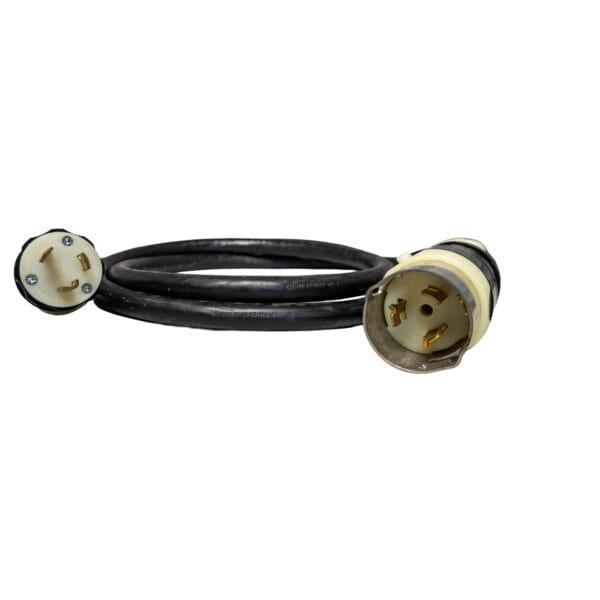When the lights go out or the jobsite needs power, you can’t trust a flimsy cord. That’s why we build Generator Extension Cords that deliver heavy current safely and reliably — whether you’re running a portable generator, powering welders, or keeping critical systems online during outages.
Each cord is constructed with high-strand copper conductors to minimize voltage drop, wrapped in a SOOW or SJEOW jacket that resists oil, water, abrasion, and sunlight. These jackets stay flexible in extreme cold and won’t crack under heat, mud, or rough handling.
We offer the most in-demand configurations:
- 30A NEMA L14-30 cords for portable generators (common in residential and light construction backup).
- 50A NEMA 14-50 cords for larger standby generators and RV power hookups.
- Twist-lock cords (L5, L14, L21 series) for secure connections that won’t shake loose under vibration.
Lengths range from 10 ft to 100 ft — enough to keep generators safely outside while delivering power indoors or across a site. With UL/CSA certification, these cords are jobsite-approved and built to perform under stress.
When backup power matters, these cords aren’t accessories — they’re lifelines for your operation.
1. What makes these cords different from standard extension cords?
They’re rated for higher amperages (30A–50A) with heavy copper conductors and industrial-grade connectors, built for generators and high-demand loads.
2. What’s the most common generator cord type?
The NEMA L14-30 (30A, 125/250V twist-lock) is the most popular for portable generators. Larger units often use 14-50 (50A) cords.
3. Can these cords be used outdoors?
Yes. SOOW/SJEOW jackets are water, oil, and weather resistant. They remain flexible in freezing conditions and resist sunlight damage.
4. How do I choose the right length?
Pick the shortest cord that allows safe generator placement outdoors. 25 ft is most common; 50–100 ft options are available for distance runs.
5. What’s the difference between 30A and 50A cords?
30A cords use 10 AWG conductors and are common with portable generators. 50A cords use 6 AWG conductors and handle larger standby or RV power.
6. Do these cords work with RVs?
Yes. NEMA TT-30 and 14-50 cords are standard RV power connections, and can also be used with compatible generators.
7. Are these cords UL/CSA listed?
Yes — all cable and connectors meet UL and CSA certification standards for safety and compliance.
8. Can I use a generator cord indoors?
No. Generators must always be operated outdoors. These cords let you place the generator safely away from structures while running power inside.
9. Can I connect two cords together?
It’s possible but not recommended. Each connection adds resistance and risk. Always use a single cord of the correct length and gauge.
10. Are these cords made in the USA?
Yes — assembled in the USA with heavy-duty components, designed for rugged industrial and emergency use.
Only logged in customers who have purchased this product may leave a review.



Reviews
There are no reviews yet